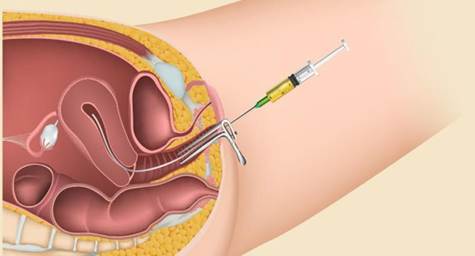Optimising IVF Outcomes: The Essential Role of Mock Embryo Transfer
Introduction
This fertility blog is a place where every couple’s dream of becoming parents is supported with compassion, expertise, and dedication. One of the key steps in the IVF journey that helps improve the chances of success is the Mock Transfer IVF. Though it might seem like a small step, it plays a big role in making sure the actual embryo transfer goes smoothly. In this article, we’ll explain what Mock Transfer IVF is, why it’s done, and how it helps make IVF treatment more effective.

What is Mock Transfer IVF?
A Mock Transfer IVF, also known as a trial transfer or dummy transfer, is a practice run of the real embryo transfer. It’s done before the actual transfer to help doctors understand the shape and size of the uterus and to find the best way to place the embryo. Importantly, no embryo is transferred during this step.
Here’s why it’s important:
- Understanding Uterine Structure: Every woman’s uterus is a little different. The mock transfer helps doctors learn about the uterus’s shape and position.
- Finding the Best Spot: It helps the medical team find the ideal depth and angle to place the embryo during the real transfer.
- Improving Comfort: With this information, the actual transfer is quicker and more comfortable for the patient.
- Better Success Rate: When everything is planned ahead of time, there’s a higher chance of a successful pregnancy.
Steps Involved in a Mock Transfer IVF
- Preparing the Patient: Before the procedure, doctors make sure the uterus is ready. This may include hormone treatments or ultrasound checks.
- Using a Catheter: A thin, soft tube called a catheter is gently passed through the cervix into the uterus—just like in the real embryo transfer.
- Ultrasound Guidance: An ultrasound is used to help guide the catheter into the correct place and to see how smoothly it passes through.
- Measuring the Uterus: Doctors measure how deep the uterus is, so they know where to place the embryo later.
- Removing the Catheter: Once everything is checked and recorded, the catheter is gently taken out.
This process gives the medical team all the details they need to plan the actual transfer with high precision.
The IVF Mock Transfer “Biopsy” – What It Really Means
Sometimes, the mock transfer is called a biopsy, but this name can be confusing. In this case, no tissue is removed or tested. Instead, the “biopsy” refers to the gathering of information about the uterus’s structure and how to best perform the embryo transfer. Think of it as a rehearsal before the main event. The goal is to make sure everything goes right when it really counts.
Does Mock Transfer IVF Hurt?
Many patients wonder if the mock transfer will be painful. The good news is that it usually causes very little discomfort. Most people describe it as a feeling of slight pressure or mild cramping, similar to period pain. The doctors and nurses make sure you’re as comfortable as possible throughout the process. And because the team learns so much during this step, the actual embryo transfer is often quicker and easier.
Is Bleeding Normal After a Mock Transfer?
Light bleeding or spotting after the mock transfer is fairly common and not usually a cause for worry. This can happen because of the catheter moving inside the uterus. However, if you notice heavy bleeding or feel unusual pain, you should contact your doctor right away. The medical team will monitor your condition to ensure everything is fine.
Why is a Mock Transfer IVF Test Done?
The mock transfer test helps ensure that the real embryo transfer goes smoothly. Here are the main reasons for doing it:
- Check the Uterus: To spot any abnormalities that might make embryo transfer difficult.
- Perfect the Technique: Helps the doctor find the best depth and angle for placing the embryo.
- Make the Procedure Comfortable: Less time is needed during the real transfer, which means more comfort for you.
- Boost Success Rates: Careful planning makes it more likely that the embryo will implant and grow into a healthy pregnancy.
Conclusion
Who might benefit:
- Patients with a history of difficult transfers.
- Patients who have had treatments to the cervix that could cause narrowing.
- Patients with any concerns about the uterine environment.
The Mock Transfer IVF is more than just a preparation—it’s an important part of increasing your chances of IVF success. With advanced tools and experienced professionals, every step is designed to give you the best possible outcome.
